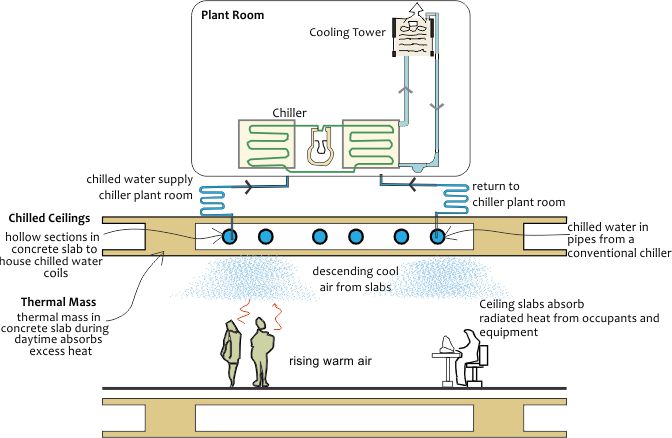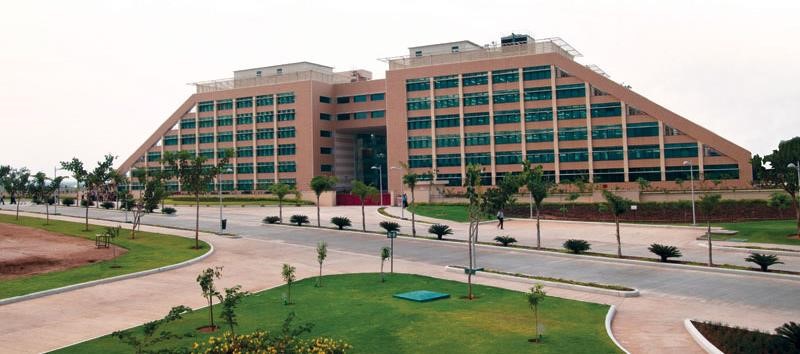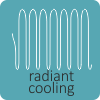Guiding principle of a conventional air conditioning system is convection whereas in a radiation system, the guiding principle is heat transfer through radiation. Heat transfer predominately occurs through surfaces like floors, ceiling, or wall which in turn are heated or cooled by embedded coils. Radiant systems are installed in combination of large thermal mass to facilitate absorption and radiation. For optimizing performance of the systems, coils should be installed in floors for heating purposes, and in ceiling for all cooling purposes. Application of radiant systems is limited to areas which have high latent load and chances of air leakage from humid areas are high. Improperly installed systems can lead to condensation on the building structural elements.
Types of radiant cooling
- Chilled slabs: These deliver cooling through the building structure, usually slab, and are also known as thermally activated building systems.
- Ceiling panels: These deliver cooling through specialized panels.
Systems using concrete slabs are generally cheaper than panel systems and offer advantage of the thermal mass while panel systems offer faster temperature control and flexibility. Capital expenditure of this system is the same as a high efficiency chilled water system; however, operational expenditure is less than the chilled water system.
Radiant cooling systems consist of coils embedded within the structure. These coils carry chilled water generated either through conventional electric chiller systems or low energy chilled water generation systems like absorbent chillers, desiccant chillers. Chilled water in the coils cools down the slab or panels which in turn act as heat sinks for sensible heat loads of internal spaces.
Concrete structures typically used with radiant cooling systems also increase the thermal mass of buildings. This introduces inertia in the structure against temperature fluctuations and allows it to absorb heat from internal spaces.
Table:Advantages and disadvantages of radiant cooling systems
| Pros | Cons |
| With a ventilation air system, thermal mass can significantly reduce the need of air side systems reducing the fan power in HVAC system drastically | Sections with leaking or blocked radiant pipes have to be closed, disrupting supply in the process |
| Noise and drafts of air movement are removed. There are no diffusers in the way of décor and cleaning | Condensation reduces cooling capacity. Hence an efficient envelope with non-openable windows is required |
| Additional savings due to lower supply temperature of chilled water (about 7-9 °C lower) | Condensate formation on the cold radiant surface results in water damage, moulds etc. |
| Better comfort conditions are maintained inside the space | Complicated controls required skilled maintenance staff |
| Not easy to maintain temperatures below 23 °C |





















